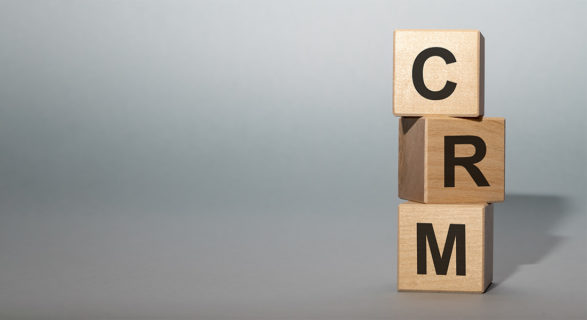A good or bad CTA can have a huge impact on whether your prospects and customers want to keep interacting with you. And it can help you guide your reader to the next step in their purchasing journey.
So before you hit send, make sure your next email CTA is helping (not hurting) your marketing efforts by avoiding these 10 faux pas.
1. You’re Not Using CTAs
If the only clickable portion of your email is the legally mandated “unsubscribe” link, you’re in trouble. There’s very little chance your emails are going to result in increased website visits, signups and, ultimately, sales.
2. Using Generic CTAs
Shop Now. Submit. Sign Up. Remember, most people won’t actually read every word you so painstakingly include in your message. So it’s important to be specific about where your CTA takes them.
Here are some great examples of highly specific CTAs:
- Get my free proposal
- Request a demo
- Sign up for a free month
- Get my moving quote
- Schedule a maintenance check
- Schedule my next appointment
3. You’re Not Making it Personal
Studies have shown that personalized email messages improve click-through rates. Take this concept even a step further by framing the CTA in first person.
Instead of “Get your free quote,” try “Get my free quote.” This slight change forces the reader to visualize themselves performing the prescribed action.
Businesses experience a 90% jump in conversion when changing the word ‘you’ to ‘me’ in the CTA
4. Your CTA’s Words and Colors Are Dull
A call to action should be enticing — visually and emotionally. Most email CTAs are found in the form of colorful buttons and contain language suggesting a sense of urgency.
Here are a few eye-catching CTA copy examples:
- Memorial Day Blowout: 50% off!
- Reserve now (Limited Seating Available)
- Today Only: #treatyoself to 15% off
5. You’re Burying the Lead
Always remember — users have short attention spans and are probably quickly scanning their emails, deciding what to discard and what to read. Keep your CTA toward the top of your email to increase the likelihood your reader will see and hopefully click it.
6. You’re Too Pushy
No one likes a pushy salesman. CTAs that are outlandish, assumptive or even downright rude can be a huge turnoff to your audience. While negative phrasing can be effective, use it with great caution.
Examples of destructive email CTAs are:
- Show me how to stop screwing up my email conversions.
- Don’t be the fluffy guy at your next reunion. Start working out now.
- No, I’m not an idiot. Give me the free trial.
Tip: The best guideline is to keep things positive and speak to your audience the way you would like to be spoken to.
7. There Are Too Many CTAs
This one goes hand-in-hand with being too pushy. Emails should be short and to the point. Having more than one CTA can not only come off as desperate or pushy, it makes it hard for your reader to focus.
Keep each email clear and focused. Use one CTA to make your content easier to digest and allow the reader to easily find it later.
Longer and simpler pages enjoy a higher conversion rate — up to 220%!
8. Your CTA Is Too Small
An easily missable CTA might as well not be in your email at all. Make your CTA stand out by adding white space around it and using a bold color.
9. Your CTA Is Too Large
Interestingly, worse than a too-small CTA can be one that’s too big. Users often find threateningly large lettering unappealing, consciously or subconsciously. It can also come off as pushy or desperate.
10. You’re Not A/B Testing
The only sure way to determine whether your CTAs are effective is to test them.
A couple of things to remember when testing your CTAs:
Don’t test more than one thing at a time. Whether it’s color, font size or copy, you want very specific and narrow data on what’s working and what isn’t.
A slight preference may not be statistically significant. Let’s say you send 500 emails — 50% have a blue CTA button and 50% have green. You notice you get a 28% click-through rate with the blue CTA button (70 users) and a 32% clickthrough rate with the green CTA button (80 users).
While click-throughs from 10 extra users may seem great, it’s only 2% of the entire sample. This small percentage could fall within the margin of error and not actually show a true audience preference. If you conducted the test again and found the same result, you might have a good case to support the preference for the green button.
Avoiding these common mistakes when crafting your CTAs can boost your email marketing efforts and help you have better interactions with your existing and prospective customers.
Brittanie Begeman’s Top 3 Tips
Diversify your CTAs! The more chances you give your readers to click, you’ll likely see an increase in CTAs. However, don’t go linking every little word in your email — be strategic.
- Link text that creates emotion — such as, “Could your unkempt yard scare off buyers?”
- Don’t get link happy — if you create too many text links, your email becomes less readable and your readers don’t know what to click.
- Use images for CTAs — this allows you to further brand your emails and create eye-catching content readers want to click on.
Take some of the friction away from these important interactions with Thryv’s Text and Email functionality. This feature helps you manage large-scale campaigns and makes it easier to meaningfully converse with your audience.


